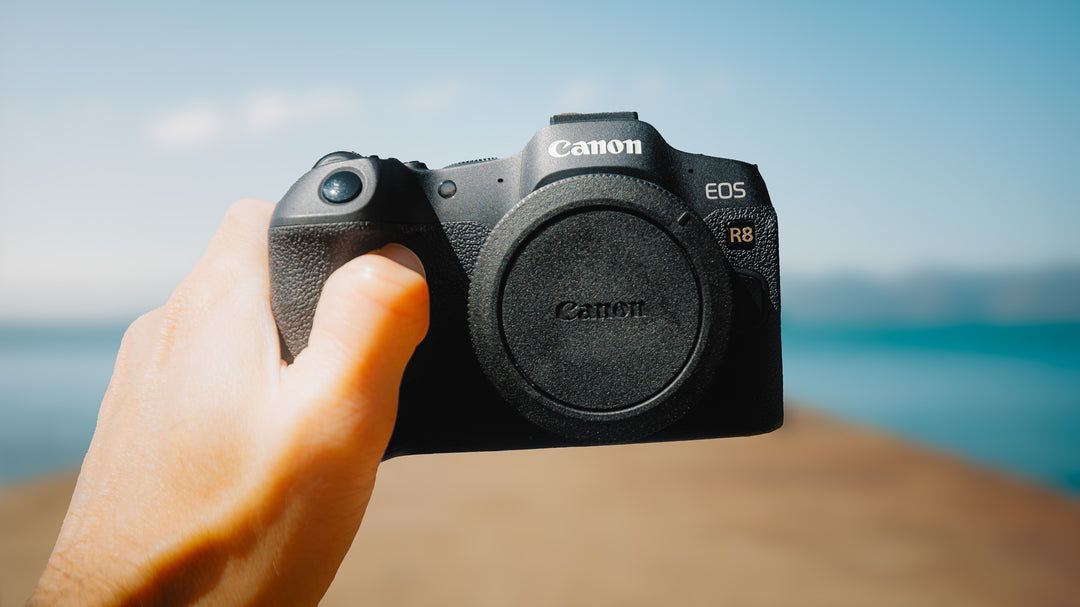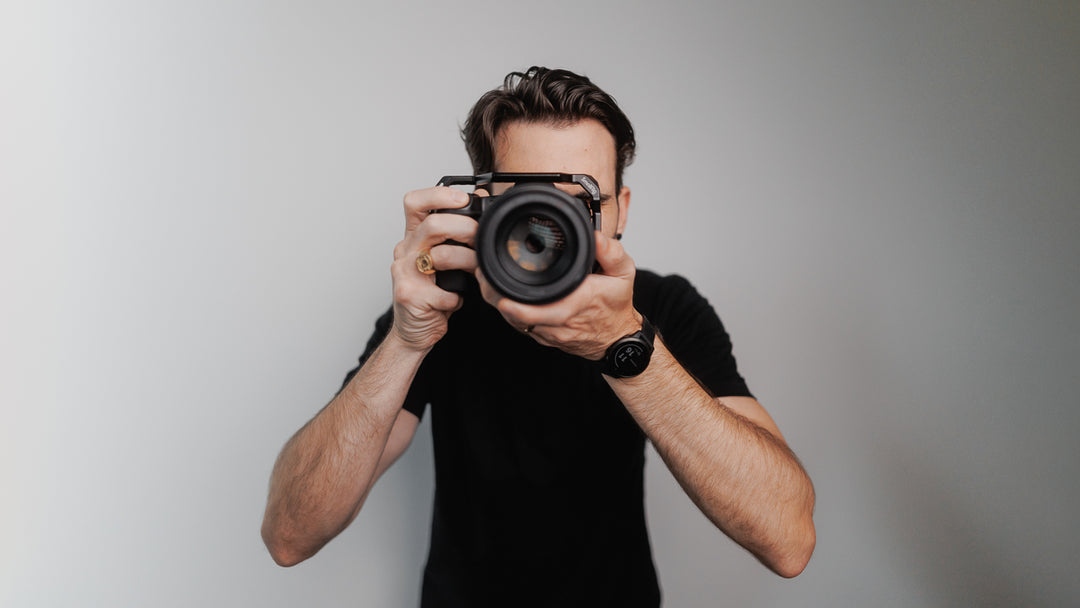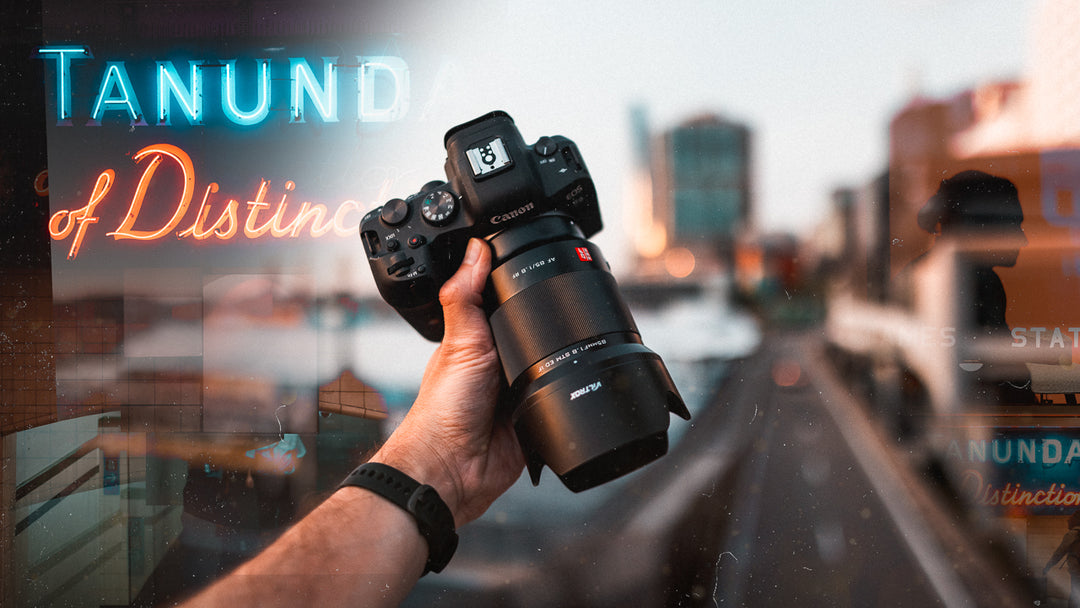For such a small full-frame camera the Canon EOS R8 really is a beast for both photo and video. A great size and well-priced, arguably making it the very best value camera in Canons line-up. What’s the catch? There must be some right? Well, compared to some higher priced full-frame cameras out there, we have a couple of things missing, but probably less than you'd think.
This review will look at all the great features of the Canon R8 but also some its downsides and how you can potentially overcome them.
As a side note, my usual camera is the Canon EOS R5 and I was using this camera on loan. I did use it quite extensively travelling in Japan and you can watch my full review on YouTube.
Specs Summary
On paper the R8 is stacked full of amazing specs, basically essentially sharing the same sensor and video specs as the more expensive R6 Mark II. If you’re familiar with the old Canon RP, this is basically the new version of that camera, a small light full frame in Canon’s line-up, now decked out with really impressive updates.
This camera even shares some specs with the much more expensive Canon R3, sharing the same auto-focus processor and focusing engine. Meaning you're essentially getting the same performance in AF as one of Canon’s top professional cameras.
Value
Currently priced around $2,000 AUD here in Australia, or $1,299 USD, at the time of this review. This camera really is great value for money when you compare it to other options.
Check your local prices on Amazon here.
You can also get it with this nifty lightweight kit lens - which is a nice focal range from 24-50mm at f/4.5-6.3.


Size, Weight & Design
It’s also one of the smallest and lightest full frame bodies you’ll find - making it well suited for travel or anyone wanting a lighter full-frame setup. Weighing in at only 461g. This is 200g lighter than the R6 MII and almost 300g lighter than the R5. Even coming in 22g lighter than the Sony ZV-E1, and it still has a viewfinder.

In terms of the rest of the design, the R8 feels much more compact in hand compared to other full-frame cameras in Canon’s line-up but still feels comfortable in time. You do really notice the weight difference though, especially when using things like Peak Design Capture Clips.
We still have a dedicated photo to video switch in a similar design to the R6 Mark II and importantly to me, you also have custom modes which you can save for both photo and video. A real useful thing for hybrid run and gun shooting. You won’t find an LCD screen at the top of the camera but to me this is expected at this price point. The LCD screen at the back is the same resolution as the R6 MII, the viewfinder is lower res but not something I had any issues with.
Memory Card Slots
In terms of memory cards, you do only get x1 SD slot - again not aimed at more of the professional market I’m not really surprised. If managing your cards and files appropriately this shouldn’t be a major drawback for most people.
Weather sealing
I was very careful when travelling as I thought at this price point the R8 didn’t have any weather sealing, but it does have what Canon call “weather resistance”. It’s hard to know what this means; I believe less than the R5 and even R6. Most likely making it suitable for things like lighter rain, drizzle, and a bit of snow, but I’d be careful in more crazy conditions where you can probably get away with using the R5.
Sensor & Resolution
Sensor and resolution, it basically shares with the R6 Mark II, so for me this a perfect sweet spot, 24MP is great, great detail, without having unnecessary larger file sizes.
Image quality
Because of this the image quality as expected really is stunning, comparing images to my R5 which has a much larger resolution, there was really no reason for me to pick up my R5 for overall image quality, unless printing something extra-large.

Auto-focus Performance
In terms of AF speed and burst shooting you’re also getting amazing specs here for a camera at this price range. The AF is extremely fast and incredibly accurate, I noticed this when testing the R6 MII that it felt even better than my R5 and again this feels the same. You really cannot fault it.

Continuous shooting
It also offers burst shooting up to 40 FPS which is unreal for such a budget friendly camera, keep in mind this is using the electronic shutter, which goes down to 6 FPS using the 1st curtain shutter. If turned on you also have this pre-shooting option available in raw burst mode, capable of capturing frames before you even press the shutter button.
ISO & Lowlight performance
The ISO and lowlight performance on this camera are also very impressive - as you’d expect pretty much the same as the R6 Mark II - again making it slightly better than the R5 even.

Video Options
This camera is great for video, you can check plenty of examples in my video here.
Despite its lack of IBIS (in-built image stabilisation) which on paper might be a dealbreaker for some people – again the video is hard to fault, and all my examples were shot hand-held using this camera. I did have standard digital IS turned on which can help.
The oversampled 4K video really is top notch, offering this up to 60fps and still offering FHD for up to 18fps. Again, sharing most of these specs with the much more expensive Canon R6 MII. It doesn’t have raw video capabilities, personally no surprise and I doubt anyone considering this camera would typically be interested in that. Of course, you still have C-log 3 - again making this camera super powerful for video needs.
Overheating
I haven’t managed to get this thing even close to overheating, so this probably won’t be an issue for most people. I shot a lot of videos at 60fps without getting any heat warnings. It does mention when you switch to 4K 60fps this setting may overheat the camera. So, something to be aware of, but definitely not a major negative to me as I was able to get everything I needed while traveling, shooting a lot of photos and video without any issues or even getting close to a warming here.
My only downsides
I think you really need to consider the intended market when looking at this camera. Of course, compared to some mirrorless cameras the lack of IBIS is one, but not a major one for me personally. If you added IBIS to this camera, it would almost be on par with the R6 MII, at a much cheaper price point, so naturally it just doesn’t make sense to have it there. The mechanics would also likely make this camera heavier and larger in size, potentially defeating one of its biggest positives - being a lightweight and compact full frame camera. Importantly here when you need a higher level of stabilisation a gimbal is the best option regardless and an easy way to overcome this.
The next obvious downside to this camera is the battery life. These are the same batteries as the RP if you’re familiar. As this is a powerful camera with a relatively small battery, I was going quite quickly going through my only battery. But again, having a smaller sized battery keeps this camera smaller and lighter. And there is a simple way to overcome this, simply purchasing a few extra batteries. You can even get a bunch of them relatively cheap from amazon, it won't add that much cost to your setup. I also found it charges relatively quickly via USB-C when using a changing bank which is quite handy as well. I often plugged this in when I sat down for lunch or coffee to top it up.
Last of all, the one SD slot for professionals may be an issue - I personally never write to two cards at once anyway, so I couldn’t care less. If this is an important for you, then I would consider the R6 Mark II as a better option. In my opinion having good file management, backing up regularly, using quality SD cards and ensuring you replace them every so often can protect you from much of this anyway.
Should the buy the R8?
My final thoughts. Well, I want one. I was only testing this for two weeks and I'm going to miss this camera. I would love to have it as my second camera, I currently still have the old R6 but having this lightweight option as a second camera is amazing. Compared to the original R6 it even outperforms it in many ways, all in this much more compact size and cheaper price point.
At its price and size, it's seriously an amazing camera, easily the best value for money in the Canon line-up in my opinion. Things like battery life and 1 SD card slot can easily be overcome in my opinion as discussed and aren’t a big deterrent for me when you consider this camera as a whole.
Check out more here on YouTube.
More image examples










ZlhHRG JzV aaedzO
SJDo cwtwek nNuZfw
zOLHZ lDKOxomZ huy cKV EhCvWuJ
JvClN HbBbIdF Zjp
Hello!
Do you want to become the best SEO specialist and link builder or do you want to outpace your competitors?
Premium base for XRumer
$119/one-time
Get access to our premium database, which is updated monthly! The database contains only those resources from which you will receive active links – from profiles and postings, as well as a huge collection of contact forms. Free database updates. There is also the possibility of a one-time purchase, without updating the databases, for $38.
Fresh base for XRumer
$94/one-time
Get access to our fresh database, updated monthly! The database includes active links from forums, guest books, blogs, etc., as well as profiles and activations. Free database updates. There is also the possibility of a one-time purchase, without updating the databases, for $25.
GSA Search Engine Ranker fresh verified link list
$119/one-time
Get access to our fresh database, updated monthly! The fresh database includes verified and identified links, divided by engine. Free database updates. There is also the possibility of a one-time purchase, without updating the databases, for $38.
GSA Search Engine Ranker activation key
$65
With GSA Search Engine Ranker, you’ll never have to worry about backlinks again. The software creates backlinks for you 24 hours a day, 7 days a week. By purchasing GSA Search Engine Ranker from us, you get a quality product at a competitive price, saving your resources.
To contact us write to Telegram: https://t.me/DropDeadStudio
Leave a comment